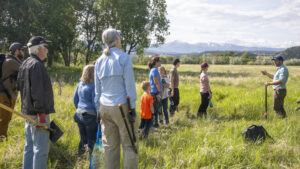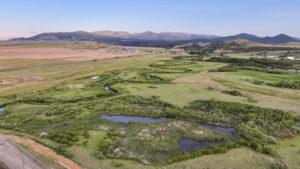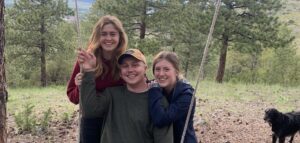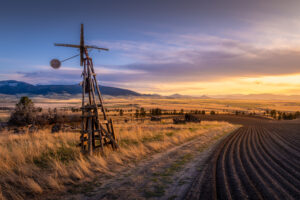A Path for Conservation and Indigenous Continuity
In 2024, the Avalanche Corporation, representing six members of the Fred and Ramona Des Rosier Family, entered into a landmark conservation agreement with Prickly Pear Land Trust. To our knowledge, this is the first conservation agreement off reservation lands in Montana to explicitly protect and perpetuate traditional practices, cultural sites, and Indigenous ceremony, formally recognizing them as aligned with preserving the land’s conservation values.
The Avalanche Cultural and Conservation Easement protects 5,300 acres of open lands in the historical ǎamskǎaṗii ṗiik̇ǔnii (Southern Blackfeet) territory. The ǎamskǎaṗii ṗiik̇ǔnii have practiced sustainable management of these lands as part of a diverse and dynamic ecosystem since time immemorial. Long before Fred Des Rosier’s grandfather, Fred Choteau Campbell, ran a large sheep-ranching operation on the expansive property, generations of Native Americans not only traveled freely across it but spent extended periods of time there, living, hunting, and gathering.
“Our stories and traditions state that our people were created on the Rocky Mountain Front at least 16,000 years ago,” says Ed Des Rosier, Avalanche Corporation president.“We have profound historical and spiritual ties to this place, and our family has spent generations enjoying and protecting it. Our parents never wanted the future of this land and our ability to enjoy it to be compromised in any way by permanent development.”
The nitsítapiksi (Real people) managed the ksááhko (land) and ksááhkoom (Earth personified) for centuries as a life-sustaining ecosystem – a place where even the stones spoke to them. From ksááhkoom, they gained valuable knowledge to pass down. The family sought a conservation easement after their father brought up the idea to honor his mother’s wishes. They wanted the land to stay intact for future generations.
The Avalanche property sits high above Helena, White Sulphur Springs, and the Missouri River on the crest of the Big Belt Mountains. The mosaic of mountain meadows, sagebrush steppe, and mixed forest provides vital habitat for a resident elk herd, pronghorn antelope, bears, and bats. The headwaters for Trout Creek, Rock Creek, and Antelope Creek – tributaries of the Smith and Missouri rivers – provide climate refuge for westslope cutthroat trout. It’s also a migration corridor between the Rocky Mountain Front and the Greater Yellowstone Ecosystem for grizzly bears and golden eagles.
Western conservation traditionally tries to “save” the natural world from humans, but Prickly Pear Land Trust agreed with the family’s premise that Indigenous practices, traditions, and people are consistent with conservation.
“As members of the conservation community, we sometimes make the mistake of implying that we’re trying to protect vacant land, but there were people here before settlers arrived, and they lived intertwined with these landscapes for generations,” says Mary Hollow, executive director of Prickly Pear Land Trust. “Avalanche is one of those rare places where that connection has continued. This easement recognizes what the Des Rosier family has always done and tries to fortify their vision of the future for that landscape.”
Few native landowners have large properties outside of reservations. The family hopes this agreement can serve as a model for other landowners seeking to honor cultural uses, perpetuate Indigenous relationships to the land, and maintain stewardship activities on their properties.
The Des Rosier family donated a portion of the land’s value to make this project possible. It was also supported by funding from the Arthur M. Blank Family Foundation, The Cinnabar Foundation, Heart of the Rockies Initiative, The Kendeda Fund, Liz Claiborne and Art Ortenberg Foundation, Prickly Pear Land Trust, Yellowstone to Yukon Conservation Initiative, and other foundations.







